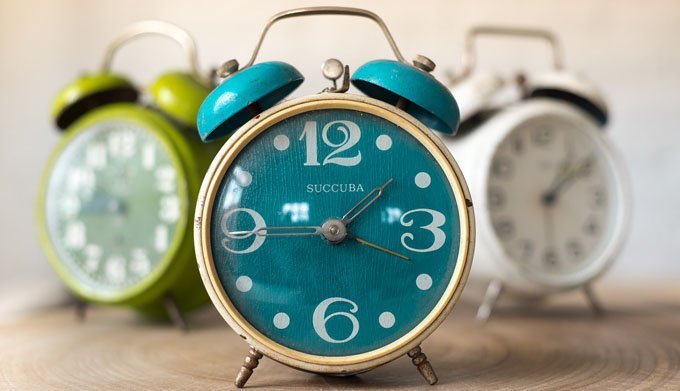I started my piano teaching journey twelve years ago. Not to the day, but more or less. And when I started teaching I really had no clue when it came to piano practice techniques.

How can that be? Surely I was able to play piano before I started teaching it, right? RIGHT?
Yes of course. But looking back on my own practice, it was pretty…terrible. I wasted a ton of time by not practicing correctly, and as I started to teach, that’s what I taught my students to do too.
I think we all have some weakness that we end up passing on to students when we first start teaching. I don’t think that’s anything to feel guilty about either – as long as you try to improve and find a better solution than the one you had as a student.
So, what piano practice tips did I uncover over the past 12 years?
Consistency is Key
Duh, right?
Thing is, I used to lump consistency in with all the other piano practice tips I gave new piano parents…
- Try to practice X minutes per day
- Read all the assignments
- Don’t forget the scales
- Practice at least five days a week
Etc, etc.
When you give all of this information at once, the consistency part can get lost in the mix. It’s somewhere in there, but they’re trying to do everything you suggested, when actually this one is the key in the beginning.
Now, my number one goal for new piano parents is that they create a habit of piano practice.
(One great way to do that is to start them on a 100 Day of Practice Challenge – get the printable for that here. For something even simpler, you might try an ice-cream incentive like this one.)

I encourage them to practice at the same time each day or tie piano practice to a specific part of their routine. For example, directly after homework or before dinner.
We can deal with what actually happens during practice time later. First it has to be happening! So start by stressing to parents that routine for the first few weeks and don’t worry about how long or what way the kids practice until the routine is set in stone.
If your students have been with you a little longer, it’s not too late. Start by enquiring about what practice is like now, and you can take it from there, maybe making a practice plan like this one if you need to.
Psst! If you’re looking for more ways to help your students practice smarter – have a gander at my book: The Piano Practice Physician’s Handbook here.
Focus on WHAT
Once you’ve established that routine you can move on to more specifics. Specifically, what are you going to recommend students do at that time every day. How are you going to ensure they make the best progress they can?
The traditional piano practice tips I’ve always heard teachers give parents is to practice for X minutes a day. Some have a formula for this such as: students age x 3. Some might say something like 30 minutes a day, 5 days a week.
Whatever the amount of time, I’ve come to believe this is the wrong approach.
For one thing, this invites time wasting. If your parent tells you to practice for 30 minutes, all you need to do is play something right?
So you might just play the easiest thing – the piece you already know well. Not a fantastic result.

The bigger problem in my opinion though, is that this type of focus doesn’t lead to intrinsic motivation. You see, what drives most of us back to the piano again and again to practice, is a little addiction we all share. An addiction to making progress and improving our skills.
But if students are told to put in the time rather than try to get results – they might never develop this addiction. And it’s the feeling of accomplishment, the focus on goals that will keep them practicing long after their parents get sick of telling them to.
So, instead of how long, focus on WHAT. Give your students goals to achieve each week. Make the goals specific and measurable and they’re sure to come back for more when they get addicted to the rush of achieving those goals.
See more about giving students the drive to practice effectively in this post.
Lasagne
Yum. The fancy pants name for what I call lasagne practice is “interleaved practice” but I prefer lasagne myself. Don’t you?
Piano practice tips are easier to implement when you give them friendlier names. 😉
This is where you practice A a little, then B, then A, then C, then B, then A, then C. Or something to that effect. Basically, don’t practice one item for a longer time but instead return to it several times, breaking it up with other tasks. (There’s a great article by Dr. Noa Kegayama on the more scientific side of this type of practice here.)

Practicing like this can feel like you’re making less progress. It’s a little bit uncomfortable and feels like hard work. Well, that’s a good thing. We want practice to be work.
The more brain energy our practice takes, the more likely it is to stick. When we practice one thing for a long time, we’re way more likely to shut our brain off. And that’s when the time-wasting starts and the progress stops.
(See this post for more practical practice strategies like this one.)
Back when I started teaching, I recommended students started with their scale warm-ups, then moved through each of their pieces one by one. But now, once students are ready for it, we step it up with the lasagne style practice and they make speedier progress as a result.
More Piano Practice Tips
There are lots of lasagne style practice strategies detailed in my new book. Click on the image to see more about The Piano Practice Physician’s Handbook and get your copy today.

What do you wish you knew when you started teaching?
Tell us your mistakes, oopsies and ignorances over in the Vibrant Music Studio Teachers community on Facebook. It’d be great to see you there!

I love the lasagne analogy. I’ve taught my beginning students to do this but didn’t really have a name for it. Thanks for a good kid-friendly word for what I’ve already been saying!
Thanks HeatherAnne! It’s always good to give these things catchy names, eh?
After reading this and a couple of your other posts, I am actually feeling excited about teaching! I can’t tell you how long it’s been since I have felt that way. I’m looking forward to reading everything on your blog and implementing some of the great ideas, and making practice kits for my students. A big thank you from a very experienced teacher (25 yrs +) who is in dire need of fresh motivation!
This made me smile for hours! Thank you Jan for your kind words, I’m so glad I could help re-inspire you about teaching. 😀